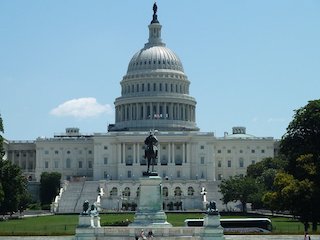Members of Congress still have no agreement on new funding levels for a full fiscal year 2023 spending bill, casting doubt over whether the issue will be resolved by the end of the year, according to CNN. It also calls into question whether lawmakers may be forced to fund the government at the same level as last year or bump talks to January, when Republicans take control of the House.
Senate Majority Whip Dick Durbin warned on Tuesday about the prospects of the government funding fight moving into next year. “That would just invite more negotiating obstruction,” said the Illinois Democrat. “This fiscal year began October 1. Let’s get this job done this year, do it before Christmas.”
Senate GOP Whip John Thune raised the possibility of a funding extension lasting into next year when the new Congress would be in session, notes CNN. “I assume that people will want to fund the government until we have a longer resolution in place.”
For now, Congress is on track to pass a week-long extension to avert a shutdown on Friday.
In the meantime, the federal government has begun the process of preparing for a potential shutdown. Federal agencies and departments are participating in the mandatory but standard process of releasing shutdown guidance to agencies ahead of this Friday’s funding deadline.
Every department and agency has its own set of procedures, including the FCC. Those plans include information on how many employees would get furloughed, which employees are essential and would work without pay, how long it would take to wind down operations in the hours before a shutdown, and which activities would stop.
The FCC has just over 1,400 employees. The chairwoman and other three Commissioners would be retained because they are compensated by a resource other than appropriations.
Under the guidance prepared in October 2021, thirty are considered necessary to protect life and property and another 210 are paid by a resource other than annual appropriations. An additional 12 are considered necessary to perform activities authorized or implied by law and another seven are needed to discharge the President’s constitutional duties. That’s a total of 259, plus the three Commissioners and FCC Chair, (or about 18 percent) who would work during a partial shutdown. The remaining 1,182 employees, or approximately 82 percent of the total, would be furloughed and sent home.
Activities necessary for the protection of life or property are considered a priority and would continue. So too, would spectrum auction functions, broadband data and mapping activities — all funded through a source other than lapsed appropriations. Rip & Replace reimbursement would continue for the same reason, as would Emergency COVID-19 relief programs, including the Emergency Broadband Benefit Program, Emergency Connectivity Fund, and COVID-19 Telehealth Programs.
Suspended activities include licensing services, including broadcast, wireless, and wireline and local competition enforcement. Spectrum management and the creation of new opportunities for competitive technologies and services must be suspended. Equipment authorizations, including those bringing new electronic devices to American consumers, cannot be provided and consumer complaint and inquiry phone lines can’t be answered.
By Leslie Stimson, Inside Towers Washington Bureau Chief





Reader Interactions